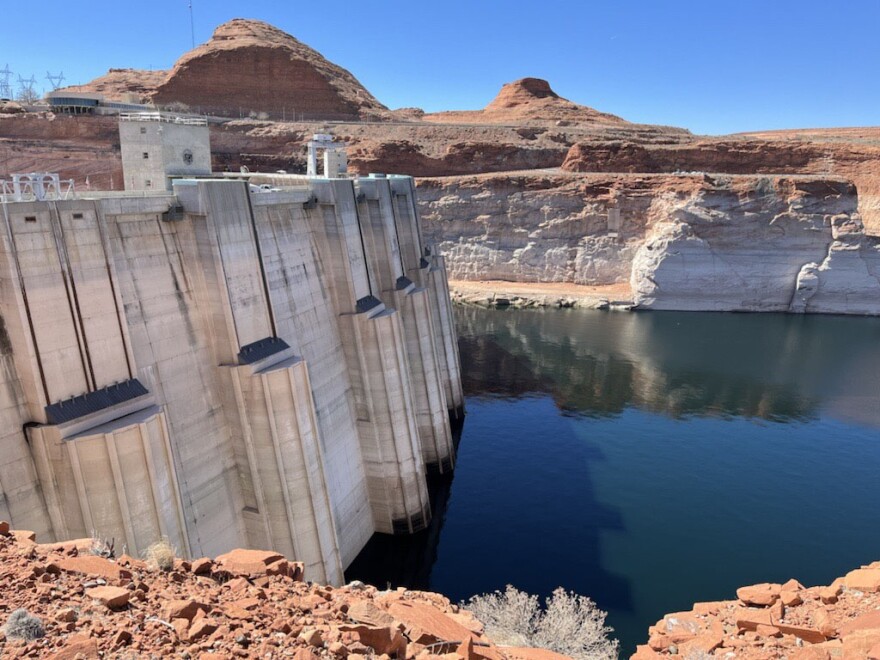The U.S. Bureau of Reclamation projects that in 2024 the water level in Lake Powell could drop below the intakes that serve the City of Page and the LeChee Chapter of the Navajo Nation. The federal agency has announced short term measures to prop up the reservoir, which is threatened by drought and climate change. But the City of Page is thinking ahead to longer-term solutions. KNAU’s Melissa Sevigny spoke with Bryan Hill of Page Utility Enterprise, the city’s power and water utility.
To start, tell me how the dropping levels in Lake Powell could affect the water supply for the City of Page?
The City of Page gets all of its water supply from Glen Canyon Dam. The primary inlet for Page’s water supply is at 3480 feet of elevation… There’s a chance it could get down to that 3480 point, but they’ve already got a Plan B, and Plan B is, it could go down another 17 feet… 17 feet is where water can still come into the generator penstocks. That’s the big inlets that go into the generator that obtain water from the lake and drop it into the generator. From those penstocks we can also get a feed for water.
So this is the Plan B, does this require any kind of modification, do you have to make any changes to make that happen?
No, that exists. But then there’s a Plan C that does require some modifications, that the Bureau of Reclamation at the dam is planning to do…. The river outlet tubes, there’s a point at which the water just simply can’t go any lower behind the dam… As long as there’s a little bit of water coming down the Green River, the Colorado river and the San Juan River, all that flow into Lake Powell, there will be water going through those outlet tubes to keep the water going down in the Grand Canyon. We can pull water out of those outlet tubes, and still feed Page, with this modification they’re planning.
And those modifications are happening the fall of this year?
That’s correct, yes.
Who is paying for that?
The City of Page. Our water utility will pay the dam, the Bureau of Reclamation to make those modifications.
Can you talk about in the long-term scenario if the drought continues and we still see these issues happening, what’s going to happen next?
That’s an excellent question. This is kind of a band aid. The long-term solution for this is a separate intake station. This is something that even the Bureau of Reclamation recognized this way back in 2004, they put together this pretty comprehensive study that said: really….. they should have their own inlet station, where they take out of the lake at no matter what lake level it is, and then pump it and treat it that way… There’s a lot to that, though, in that Page is just a little town of 7500, and we’re talking a 40 million dollar project.…. That’s some pretty heavy lifting for a community our size….So this is where we need some help.
So the big barrier to this long term project, the second straw project, is funding.
Correct.
What do you wish people knew about the situation?
I think there’s – in our leadership, there’s going to have to be some real hard decisions made. I mean, the tank is running dry. How we use water today is going to have to change…. Everybody’s going to have to throttle back a little bit unless something changes, unless suddenly we start getting water. If we don’t, we’re all going to have to contribute a little bit, and give up a little bit of water, to keep thing working.
Bryan Hill, thank you so much for speaking with me, I appreciate it.
Absolutely, you bet, Melissa.





